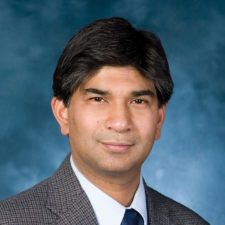Teaching
Recent Courses Taught
EECS 398: Fundamentals of the Internet
This course introduces students to the fundamentals of the internet. You use the internet every day, and in this course we permit you to “look under the hood” of the internet. We start by reviewing the differences between various applications, such as world wide web, Skype, and Bit-Torrent. The 4-layer internet model will be explained, which includes the application, transport, network and link layers. Internet protocol and TCP/IP communication will be reviewed, along with a detailed discussion of how packet switching and routers work. The link and physical layer description will include explanations of how WiFi and Ethernet networks work. By taking this course you will have a better appreciation of how computer networks work and how your computer communicates over the internet.

EECS 406 / ENGR 406: High-Tech Entrepreneurship
The technology sector represents a significant portion of the economy of every industrialized nation. In the U.S., more than one third of the gross national product and about half of private-sector spending on capital goods are related to technology. Therefore, particularly in the U.S. economic growth depends on the health and contributions of technology businesses.
This course is about “Technology Entrepreneurship,” which is a style of business leadership that involves identifying high-potential, technology-intensive commercial opportunities, gathering resources such as talent and capital, and managing rapid growth and significant risks using principled decision-making skills. Technology ventures exploit break-through advancements in science and engineering to develop better products and services for customers. The leaders of technology ventures demonstrate focus, passion, and an unrelenting will to succeed.
EECS 434: Principles of Photonics
EECS 434 provides an introduction to photonics, optoelectronics, lasers and fiber-optics. The course reviews briefly Maxwell’s equations to derive appropriate equations for optics. Polarization and liquid crystals are discussed, and reflection at interfaces, mirrors and interferometers are studied. Guided wave optics is discussed, including the important areas of dielectric waveguides and fiber optics. Other topics are also covered, such as resonator optics and lasers. Then, the attention turns to semiconductors, including laser diodes, LEDs and photo-detectors. Class demonstrations (part of your class presentations) will cover practical devices that rely on optics and photonics.
EECS 410: Patent Fundamentals
This course covers the fundaments of patents as intellectual property and is geared for undergraduate and graduate students whether in Engineering or any other field. Note that since students will be working in groups, it is not necessary that every student have a “ready-to-patent” idea. In addition, the course will cover the America Invents Act – the first major overhaul of the U.S. patent system in 60 years.
EECS 552: Fiber Optics: Internet to Biomedical Applications
This course covers the basics of fiber optics, as well as applications of fiber optics in fields as diverse as high power and broadband lasers, bio-medical diagnostics and therapeutics, telecommunications, and the “brick and mortar” for internet communications. Propagation through single and multi-mode optical fibers is studied, including the effects of dispersion and attenuation. Nonlinearities in fibers such as self- and cross-phase modulation, Raman scattering and four-wave-mixing are discussed. Different types of fibers and their fabrication are explained. Optical amplification based on erbium-doped fiber amplifiers and Raman amplifiers is described, along with a detailed study of noise and gain in optical amplifiers. Fiber transmission system examples are provided, including wavelength-division-multiplexed networks, soliton communications, and internet routers and networks. Different examples of fiber lasers are explained, such as dual core fiber lasers, cascaded Raman oscillators, and super-continuum lasers. Applications in bio-medicine include instruments such as endoscopes and bio-sensors and disciplines such as dermatology, cardiology, and ophthalmology. As a final section, current research in defense and healthcare using fiber-optic lasers and super-continuum lasers are described.

 MENU
MENU 